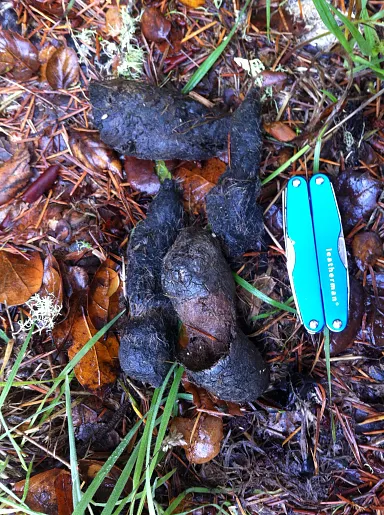
How Cat Scat Helps Solve Conservation Mysteries
- Author: Sarah Czarnecki
- Publication Date: May 04, 2022
Examining scat is a little bit like detective work. The perpetrator may or may not be anywhere nearby, but scientists can determine the who, what, when, where, why, and how from this clue alone. No, it’s not something most people discuss freely in polite society, but when it comes to tracking wild cats, excrement is well worth talking about.
We can learn an incredible about of information about felidae health, behavior, and activity just through waste. So put on your detective hat – we’re going to find out how a few droppings tell a larger story.
WHAT
Scientists can use droppings to identify which animals have been in the area at a given time. Some of the key clues are shape, color, consistency, size, location, and even odor. All of these attributes are unique to each type of animal – bobcat poo looks very different from that of a mountain lion, for example. It’s also a great way to monitor wild cats’ prey! Researchers can identify prey animals’ droppings, too, which in turn helps monitor the overall health of the ecosystem.
WHO
Scat carries an animal’s DNA in it, plus genetic material from the plants and animals they’ve eaten, and an entire world of microorganisms. And depending on what the cats eat, this complex content can vary dramatically. Bobcats are mesocarnivores, so even though they eat mostly meat, they will occasionally eat insects or even plants. Mountain lions, on the other hand, are obligate carnivores, which means ordinarily they eat nothing but meat. That gives their scat a different microbic content, and that helps researchers determine who left the ‘specimen’ behind.
To take this a step further, scientists can also use the microscopic content of scat to determine how species are related – and even identify individuals. A recent study used tiger scat to identify 26 individuals and map their territories. Just from scat alone!
WHEN
Just like forensic science, researchers studying felidae scat can determine not only who did it, but when they did it. Weather, exposure, and time will change the appearance and consistency of a ‘sample,’ which helps pinpoint a time frame of when the animal was in the area.
Researchers can also estimate how old the animal is. Size of the droppings will change as the animal grows, and as they age, the microbes in their gut will evolve. Examining the scat under a microscope can really help zero in on a cat's demographic information.
WHERE
The locations where cats decide to make their ‘deposits’ can say a lot! Mountain lions are well-known for having enormous territories – 100 square miles or more – and they mark these territories with prominently-placed droppings. These messages are clear for other mountain lions, and researchers as well. Keeping tabs on what cats consider their territory boundaries helps monitor how many animals live in the area, where they move, and how life on the urban edge impacts them.
Using the locations of the scat helps learn more about what kinds of animals share a habitat. Mountain lions and bobcats often share territories, but researchers can determine where they overlap based on the location and prominence of their droppings. And if droppings appear somewhere unexpected (like in a residential area or downtown) that’s a huge signal for researchers to focus their attentions on where these animals are living and how they’re interacting in their environments.
WHY
The ways felidae species leave their scat tells a story, too. Mountain lions, just like house cats, will scratch their claws near their droppings. They’ll do this to mark their territory, groom their claws, or signal to their fellow pumas that they’re in the area. Another reason they’ll scratch is to cover up their droppings. They’ll do this to be discreet and maintain their territories. Some cats, like male mountain lions especially, will make sure their droppings are as noticeable as possible. This helps spread their scent and attract attention. It certainly delivers a message!
HOW
Studying scat is one of the best ways to determine an animal’s diet. Looking for hair, bones, or vegetation in droppings tells a whole story. Not only can researchers learn about their diet, but when, where, and how they eat. Graphic, but educational.
Finally, examining scat can give insight into some of the most information possible: health. For most animals, irregular excrement is one of the first clues that something’s not right in the gut. If researchers find unhealthy-looking scat that indicates a poor diet, disease, or parasites, they can take steps to deepen their investigation to see how the cats are faring.
So next time you see some droppings while out on a hike, put on your detective hat and do a little non-invasive animal tracking! This one clue can paint a surprisingly detailed picture.
